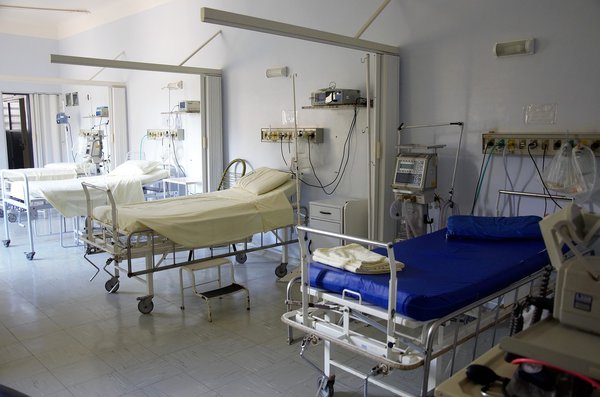Not all people living with sickle cell disease have the same level of risk for severe COVID-19, according to a new study.
The researchers say that certain factors, like a history of pain episodes and coexisting organ conditions, are the drivers behind severe illness, including the need for hospitalization.
- MORE HEALTH
- Is modern hygiene bad for childhood immunity? New research says no
- Analysis: Why we'll likely never know whether a COVID lab leak happened in China
- Philly region experiencing 'emergency shortage' of type O blood, platelets, Red Cross says
What is sickle cell disease?
Sickle cell disease is an inherited red blood cell disorder most often found in people of Black or Hispanic descent.
People who have the disease inherit an abnormal type of hemoglobin in their red blood cells, called Hemoglobin S, from both their mother and father. When only one parent has the hemoglobin S gene, a child will have the sickle cell trait but usually won’t develop the disease. They may pass it on to their children, however.
Hemoglobin is the protein in the blood responsible for carrying oxygen to the rest of the body. Hemoglobin S causes red blood cells to become stiff and sickle-shaped. Instead of being round in shape, they look like crescent moons.
Sickle cells are sticky and can bind together, blocking the flow of blood and preventing oxygen from getting where it needs to go in the body. This causes sudden attacks of pain referred to as a pain crisis.
There are several different types of sickle cell disease. Hemoglobin SS, also known as sickle cell anemia, is the most common and most severe type of sickle cell disease.
Anemia occurs when red blood cells die at a rate faster than the body can replace them. Normal red blood cells generally live for 90 to 120 days. Sickled cells only live for 10 to 20 days. This shorter life-to-death cycle is harder for the body to sustain.
Acute pain crises, also known as vaso-occlusive crises, can lead to long stays in the hospital to manage the crippling pain. The sickled red blood cells can also start to affect various organs, bones and joints.
Sickle Cell Disease and COVID-19
Previous research has shown that patients with COVID-19 and sickle cell disease are at greater risk for hospitalization compared to Black people without sickle cell disease who become infected with the virus. According to this latest study, however, the risk isn't necessarily higher for all people living with the inherited blood disorder.
Study author Dr. Lana Mucalo, of the Medical College of Wisconsin, and her colleagues instead found that children and adults living with sickle cell disease who had previously suffered more than two pain events requiring acute care were at higher risk for both severe COVID-19 illness and hospitalization. So were children with sickle cell disease-related heart, lung and kidney conditions.
Overall, the children with a history of pain episodes were 2.2 times more likely to be hospitalized for COVID-19 and more than three times likely to suffer severe COVID-19 disease.
The adults with a history of pain events were 1.8 times more likely to be hospitalized with COVID-19 and 1.9 times more likely to suffer severe COVID-19 illness.
"This study tells us that all individuals with sickle cell disease are not at equal levels of risk," Mucalo said. "Patients with a history of pain, as well as individuals with coexisting organ conditions, need to be even more careful to avoid COVID-19 infection than those without any comorbidities."
According to the registry data, pain was the most common-presenting COVID-19 symptom for these patients, both children and adults. For many of them, pain was the only presenting symptom of a COVID-19 illness.
"This means individuals with sickle cell disease who come to the hospital presenting with pain should also be tested for COVID-19," Mucalo said.
The researchers also found that hydroxyurea, a common drug prescribed to sickle cell disease patients to reduce the frequency of pain episodes, didn't affect the severity of the COVID-19 illness or the need to be hospitalized. However, the patients taking it were less likely to experience pain during their COVID-19 infection.
Mucalo says the health care providers of sickle cell patients should be recommending the COVID-19 vaccine to them, especially if they have co-existing organ conditions.
The Medical and Research Advisory Committee also recommends that people with sickle cell disease receive COVID-19 vaccination. Although the committee says that patients should always discuss any potential personal risks with their doctor first.
Data for the study was collected from SECURE-SCD, a volunteer international registry where people living with sickle cell disease report COVID-19 infections, including details on severity and treatment. The researchers analyzed data on 750 children and adults who submitted reports to the registry between March 2020 and March 2021.
Ninety percent of the study participants identified as Black, 7% as Hispanic or Latino. Half of the participants were children under 18 and half were adults. The median age of the adults was 31 years old.
The researchers noted that since the registry is completely voluntary, the study wasn't able to capture a comprehensive look at COVID-19 infections in sickle cell disease patients. The study was published in the journal Blood Advances.


